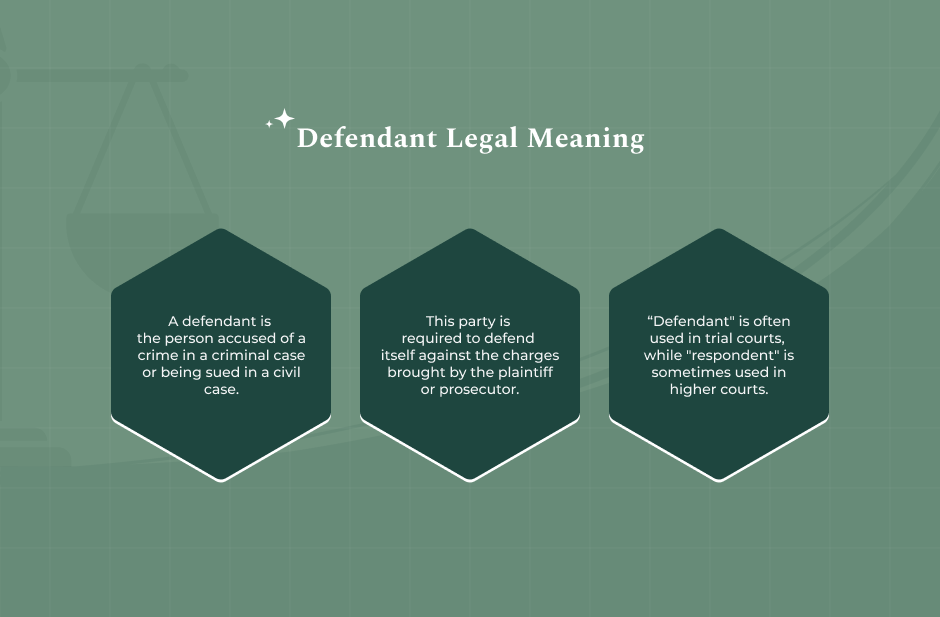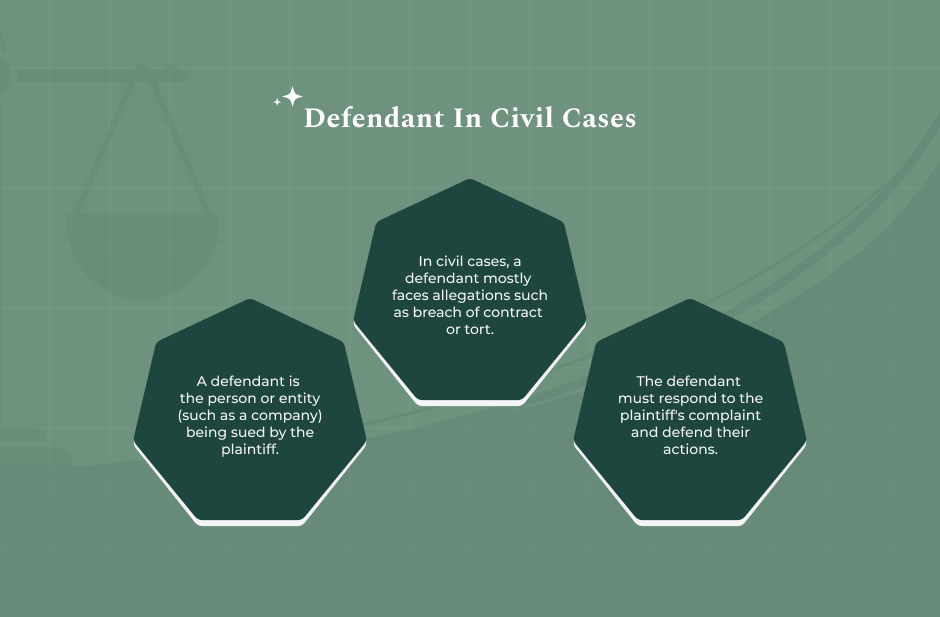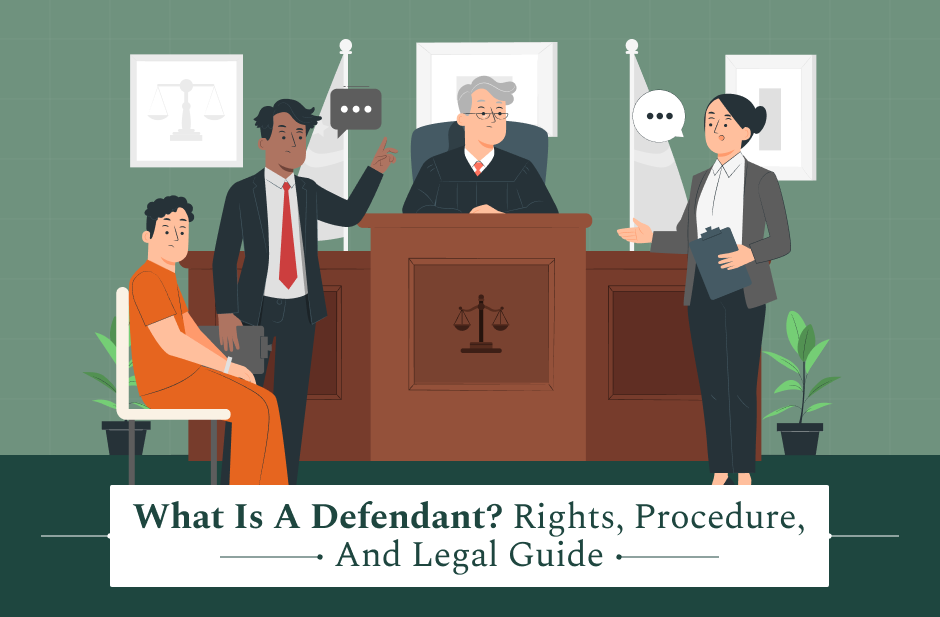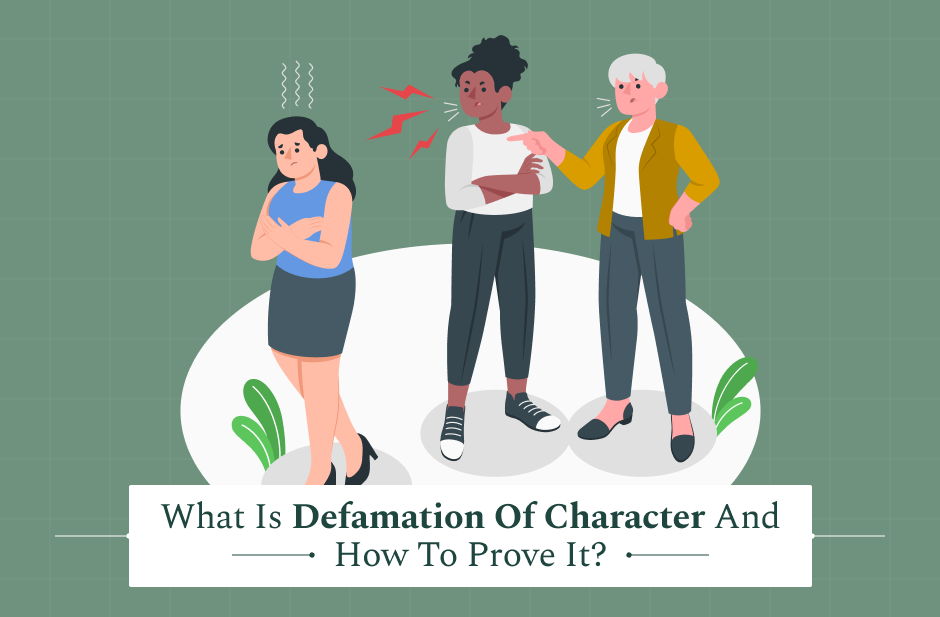When the legal papers arrive, your world often comes to a stop. If those papers name you as the person being accused or sued, you are called a defendant. Right then and there, you want to know what is a defendant and what this title in law means for your future.
The following comprehensive article will define what is a defendant, discuss your critical rights, outline the necessary procedural steps, and offer strategic guidance.
What Is A Defendant?

The defendant can be defined as the person or organization against which litigation is brought. They are the party bound to answer the charges or claims made in a court of law.
It is a basic role that exists in both criminal and civil systems of law. In the most candid explanation, the definition of a defendant could be described as the person defending against an accusation.
In A Criminal Case
For all criminal cases the following happens.
Accusers in a criminal matter usually means the government or the prosecution. They claim that the defendant has committed a crime.
So, if the State of Texas claims that Mr. John Doe committed a Robbery, Mr. Doe becomes the defendant in the case.
In A Civil Case
The defendant is the party sued by another party for damages or the enforcement of a right. In an instance of a personal injury lawsuit, the person being sued, due to him causing the accident, is considered a defendant.
Instead of using the word ‘defendant’, which applies in most law arenas, sometimes the term “respondent” is used in other areas of law, such as during appeals, family court, or administrative proceedings.
However, the core function remains essentially the same: it refers to the party that must answer to a legal filing.
So, the answer to “what is a defendant in court?” actually forms the very basis of the legal system, according to Merriam-Webster Dictionary.
Types Of Defendants
The law distinguishes between various kinds of defendants, depending on the nature of the case and parties involved. These distinctions will help in understanding the liabilities and responsibilities a defendant faces.
Natural Person vs. Legal Entity
Natural Person means an individual human being sued or prosecuted.
Corporate Defendant
A defendant can be a legal entity such as a corporation, LLC, or partnership. In that sense, the defendant may not be a human, but it is a “legal person,” also subject to liability from being sued or prosecuted. To that end, in such a case, it falls upon the entity to appoint an agent who represents the said entity in court.
This distinction becomes relevant when asking what is a defendant in a major lawsuit involving a business.
Co-Defendant And Multiple Defendants
In case multiple parties take part in this criminal act, they face the charges together (sued).
Co-defendant
Co-defendant is a person who is being prosecuted or sued with the first defendant in the same litigation.
Example
Assume two drivers create a chain-reaction accident; both drivers may be co-defendants if the injured third-party files a suit against them. Their interests may coincide or conflict, and thus create complicated legal strategies.
Third-Party And In Rem Defendants
First, we’re going to talk about who is a Third-Party Defendant.
A party brought into a lawsuit by the original defendant is known as a third-party or impleaded defendant. This usually happens when the original defendant claims that the third party is liable for all or part of the damages sought by the plaintiff.
We now deal with the In Rem Defendant.
Certain cases, especially those involving property rights, are brought against the property itself and not against a person. These types of actions are called in rem – meaning “against the thing” – and in an in rem action, the property or asset is the defendant. This occurs most often in forfeiture cases.
What Is A Defendant In Criminal Cases- Roles & Rights

The criminal justice system focuses on holding an individual accountable to the state for an alleged violation of the law. In criminal matters, a defendant’s rights are strong and well-protected by the U.S. Constitution. Thus, the answer as to what is a defendant in this instance involves being cognizant of the constitutional protections
Criminal Procedure Pathway
When a legal matter begins, do you ever wonder what steps a criminal defendant follows? Let us answer that for you.
First Step- Arrest/Charge
The Prosecutor bring formal charges against the defendant, after which the authorities arrest the defendant.
Bail or Detention
Next, there is a bail hearing. For that, the defendant has to be present in front of a magistrate. Here, after the hearing the judge delivers a statement of whether the defendant will be released on bond or jailed.
Arraignment/Plea
The defendant formally pleads guilty, not guilty or nolo contendere.
Pretrial Motions
The lawyers then file motions to suppress evidence or dismiss the case.
Trial
Without a plea bargain, the case goes to trial before a judge or jury.
Verdict and Sentencing
Sentencing is imposed by the court upon a finding of guilt against the defendant.
Appeal
A defendant has the right to appeal. So, they can challenge their conviction including their prison sentence in front of a higher court.
What Is A Defendant – Constitutional/Legal Rights In Criminal Defendants
Laws protect the rights of all defendants, be it civil or criminal. The rights are a balance of power between both parties.
Presumption Of Innocence
The most critical right is the presumption that the defendant is innocent until the prosecution proves guilt.
Right To Counsel
The Sixth Amendment provides for the right to an attorney. If a defendant cannot afford one, the court has to appoint one. This constitutes an important aspect in answering what a defendant’s protection is.
Right To Silence
The Fifth Amendment protects the defendant against self-incrimination; hence, he cannot be compelled to testify.
Due Process
The defendant is entitled to fair treatment and proceedings according to the law.
Speedy Trial And Jury
A defendant is normally entitled to a speedy trial and to a trial by an impartial jury in the case of more serious offenses.
Burden And Standard Of Proof
The burden of proof is with the prosecution. So, they have to prove to the jury or judge that the defendant indeed committed the crime. Remember, this proof has to be beyond a reasonable doubt.
Thus, the defendant does not need to prove innocence.
Instead, they may raise affirmative defenses such as self-defense or an alibi, but the burden always rests on the state.
This is in direct contrast to the civil standard, which we will next discuss.
What Is A Defendant In Civil Cases- Functions & Procedure

In a civil case, there is a shift in focus from a crime against the state to a dispute between private parties. The plaintiff and defendant seek resolution of financial, property, or contract issues.
Civil Litigation Pathway
A civil defendant’s process commences by filing a response to a complaint. The process is then followed by a protracted investigative stage. Knowledge of this assists the defendant in protecting interests.
Summons/Complaint
Formal notice of the lawsuit is served upon the defendant.
Answer/Motion To Dismiss
Whereupon, the defendant must file a response, usually within 20-30 days, either an Answer (denying the claims) or a Motion to Dismiss (the suit has no legal merit).
Discovery
Both parties have to exchange information; this includes documents, interrogatories, and depositions.
Motions For Summary Judgment
Either party may request that the court grant judgment in his/her favor without a complete trial if the material facts are not in dispute.
Trial And Judgment
If the case goes forward, the judge or jury delivers a judgment, usually financial.
Appeal
Just like in criminal cases, the civil defendant may appeal the final judgment.
Defenses & Counterclaims

A civil defendant will have a number of options for strategically defending against a claim. It will be an important element in answering what is the role of a defendant in a lawsuit.
Affirmative Defenses
These are claims that, even if the plaintiff’s allegations are true, the defendant should still win the case, for instance, because the statute of limitations has expired.
Counterclaim
The defendant in that action may also institute his own suit against plaintiff and defendant in the same action for the wrong, in case he conceives that his injury was, in fact, caused by plaintiff.
Motion To Dismiss
This is filed early in the case and argues that the complaint is legally flawed.
Burden Of Proof In Civil Context
Because it is a civil case, the burden of proof is much lower compared to a criminal case; both the plaintiff and defendant must undergo the procedure where the plaintiff has to prove his or her case by “preponderance of the evidence” (FindLaw).
That implies a burden of proof meaning that, based upon the evidence, it is more likely than not – 51% or more – that a defendant is liable. This lesser standard reflects that monetary damages, and not loss of liberty, generally are at issue.
Strategic Advice, Best Practices & Pitfalls
Being a defendant successfully requires taking timely action and making sound judgments. A defendant who delays or ignores court papers risks losing his case before it has even started.
Key Strategic Best Practices
Retain an attorney as soon as possible. An attorney is best positioned to advise a defendant on what will be expected of them and specific related deadlines.
Timely Responses Are Imperative
Never miss a deadline set by the court. Failure to timely file an Answer to a civil complaint can lead to a default judgment.
Preserve All Potential Evidence
Do not delete emails, dispose of documents, or destroy any evidence that might relate to the matter. This is what is referred to as a litigation hold, and it’s something every defendant should do.
Be Honest With Your Attorney
A lawyer will be able to present a good defense only if they are privy to everything-the good and the bad.
Common Pitfalls For The Defendant
Now, let us look into the common pitfalls on the part of the Defendant.
Avoiding A Default Judgment
In a civil case, if the defendant does not respond to the summons and complaint, then the court can enter a default judgment against the defendant. The defendant automatically loses the case and will have to pay the amount of damages the other party asked for.
Waiver Of Rights
By making unauthorized statements to the police, a criminal defendant may inadvertently waive a right to silence. The defendant should invoke the right to counsel and silence.
Improper Coordination
If you are a codefendant, then coordination with the other parties is necessary though often complicated. Conflicting defenses can harm all parties.
Jurisdictional & Systemic Variations
What constitutes a defendant is defined differently depending on which country or legal system the subject is under.
Common Law vs. Civil Law Systems
In the U.S. and UK, the common law system is followed, using an adversarial system wherein prosecution/plaintiff and defendant are adversaries presenting their cases before an impartial judge or jury.
Many other European and Latin American countries apply the civil law system that usually uses the inquisitorial system. In this scheme, an investigating magistrate or judge actively participates in probing the case, and the defendant often has a different role to play, relying less on adversarial debate.
Country-Specific Examples
Let us look at some country specific examples, shall we?
United Kingdom (England & Wales)
This is a very common term, in both civil and criminal cases. It is also used in civil cases where the party opposed to the plaintiff is called the “claimant.”
India
Indian law, being a successor to English law, has employed “defendant” in its Civil Procedure Code and Criminal Procedure Code. The defendant’s role in those procedures is outlined in a method very similar to the common law scheme.
Special/Edge Case Scenarios
Sometimes, what a defendant is may be complicated by multiple parties, or by some sort of unique legal entity.
Co-defendant Liability
When multiple parties are named as a co-defendant, their liability may be both joint and several, in which case an injured plaintiff may collect the entire judgment from any of the co-defendants, who then must seek contribution from the other co-defendants.
Or the liability may be apportioned, in which case each co-defendant is liable only for his or her share of the fault. This is an important issue for any co-defendant.
Corporate Or Limited Liability Entity
When the defendant is a corporation, there’s a special legal doctrine that may apply known as “piercing the corporate veil.” A court will sometimes hold the individual owners or shareholders personally liable if a plaintiff can prove the corporate form was merely a sham to commit fraud; this makes the individual defendant or co-defendant.
Default Judgment
One of the biggest mistakes a defendant can make is to fail to appear, or even to fail to respond, to a legal summons. If that happens, a court can issue a default judgment, which legally gives the plaintiff everything they asked for in the complaint. This is a severe consequence, almost always unrecoverable, for any defendant.
Procedural Roadmap & Visual Timeline
The best way to understand the defendant’s journey is to visualize a timeline of the whole process. It is a journey in stages, each having a distinct time limit and risk for the defendant.
Initial Stage
Charge/Complaint Filed -> Service on Defendant -> Defendant Retains Counsel.
Pleadings
The defendant files an answer or a motion to dismiss; case status conference.
Information Gathering
Discovery-interrogatories, depositions, document exchange.
Pre-Trial Stage
Motions for Summary Judgment -> Pre-Trial Hearings.
Trial & Resolution
Trial (Judge or Jury) → Verdict/Judgment → Sentencing (Criminal) or Damages Award (Civil)
Appeal or satisfaction of judgment following trial.
Every defendant must know where he or she is on this map in order to prevent fatal procedural errors.
What Is A Defendant? – Relevant FAQs:
Knowing what a defendant is and critical steps for any defendant in legal action paves the way to the most important move that a defendant can take: protecting your rights, meeting each and every deadline, and always seeking qualified counsel. Though the legal process may be at times extremely involved, it is knowing your own role as a defendant that can be your strongest defense.
If the case settles, both the defendant and the other party-the plaintiff or prosecutor-sign a formal agreement that the judge will usually ratify as a consent judgment. This disposes of the lawsuit and usually contains a release of future liability, so that the case is closed forever without need for a trial.
It depends on the type of dismissal. If it’s dismissed “with prejudice,” the charges cannot again be filed against the defendant and the matter is ended forever. If dismissed “without prejudice,” the prosecutor could refile those same charges at a later date, provided the statute of limitations has not run.
Yes. A civil defendant can file a counterclaim in the original lawsuit, suing the plaintiff for related damages. Generally, the only way the defendant may sue the plaintiff in a separate action after the case has concluded is if the new claim did not arise from the same event and was not compulsory in the original suit.

















